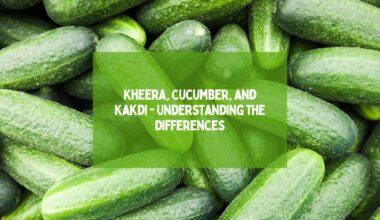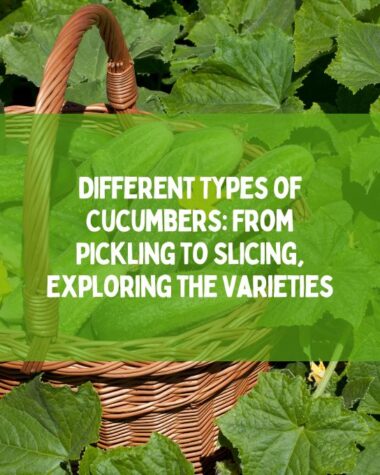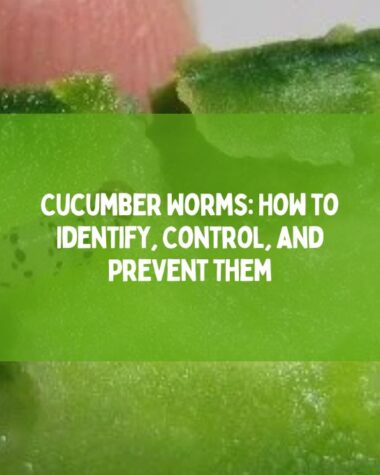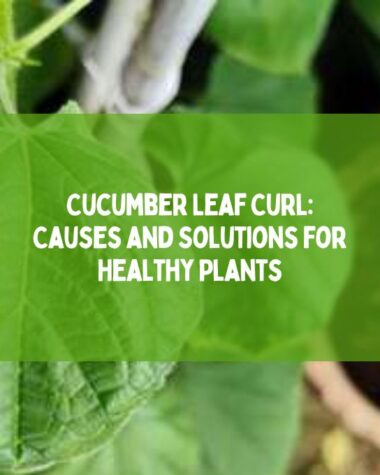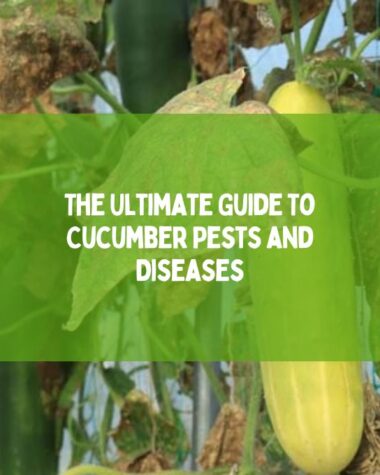Cucumber pollination is the transfer of pollen from the male flowers to the female flowers of the cucumber plant. Bees and other pollinators play a crucial role in natural pollination, but a hand pollination is an option when natural pollination is not sufficient. Understanding cucumber pollination can help improve yields and the quality of cucumbers.
Cucumbers are a widely popular and beloved vegetable, but have you ever stopped to think about how exactly they are pollinated?
Pollination is a crucial step in the process of growing cucumbers, and understanding it can help you get the most out of your cucumber plants. In this article, I’m going to tell you all about cucumber pollination, why it’s important, and how it works.
Also, I’ll discuss the different types of cucumber pollination, the role of insects and other factors, and the best practices for successful cucumber pollination.
Let’s explore cucumber pollination in real terms.
What Is Cucumber Pollination?

Cucumber pollination is the process by which cucumber flowers produce pollen, a powdery substance containing the male reproductive cells of the plant. This process is necessary for cucumbers and other plants related to them, like squash and melons, to produce fruit.
Cucumber plants belong to the cucurbit family and can be divided into two main types: gynoecious and monoecious. Gynoecious cucumbers have female flowers, while monoecious varieties have both male and female flowers. Pickling cucumbers are usually gynoecious.
When cucumbers are grown in the open field, pollinators such as bumble bees, butterflies, and other insects visit the flowers to collect the pollen, which allows them to fertilize and form fruits.
In some cases, cucumber farmers may need to hand-pollinate cucumbers in greenhouses or other enclosed areas where there is a lack of pollination. Hand-pollination can also be used on certain cucumber varieties that are self-pollinating, or parthenocarpic, meaning they do not require pollinators to form fruits.
Without proper pollination, cucumber flowers will not form fruits, leading to a complete lack of harvest. Thus, it is important to understand how cucumber pollination works in order to successfully grow cucumbers and other cucumber-related vegetables.
Related Reading:
- Cucumber Plant Care Tips: How to Keep Your Plant Healthy and Happy
- What Causes Bitter Cucumbers?
- How To Fertilize Cucumber Plants For Your Best Harvest?
How Cucumber Pollination Works?

Cucumber pollination is a fascinating process that involves the transfer of pollen from male flowers to female flowers.
Here is a step-by-step guide on how cucumber pollination works:
- Cucumber plants are monoecious, meaning they have separate male and female flowers on the same plant.
- Male flowers appear first and have long thin stems with no swelling behind the flower. They produce pollen that is needed for pollination.
- Female flowers have a small swelling behind the flower, which later develops into the cucumber fruit. They need to be pollinated for fruit development.
- Bees and other pollinators play a crucial role in cucumber pollination by transferring pollen from male flowers to female flowers. When bees land on male flowers to collect nectar and pollen, they also pick up pollen, which they transfer to female flowers while collecting nectar from them.
- The transfer of pollen is necessary for successful fruit development. Once the pollen lands on the stigma of the female flower, it germinates and grows down the style to the ovary, where it fertilizes the ovules, resulting in the formation of the cucumber fruit.
- The process of pollination is essential for the production of cucumbers. Without pollination, there would be no fruits, which can result in reduced yields and lower-quality cucumbers.
To conclude, cucumber pollination is a natural process that relies on the transfer of pollen from male flowers to female flowers by bees and other pollinators. Understanding the process and the factors that affect it can help improve pollination and ultimately lead to better yields and higher-quality cucumbers.
How To Hand Pollinate Cucumbers? Why it’s essential?
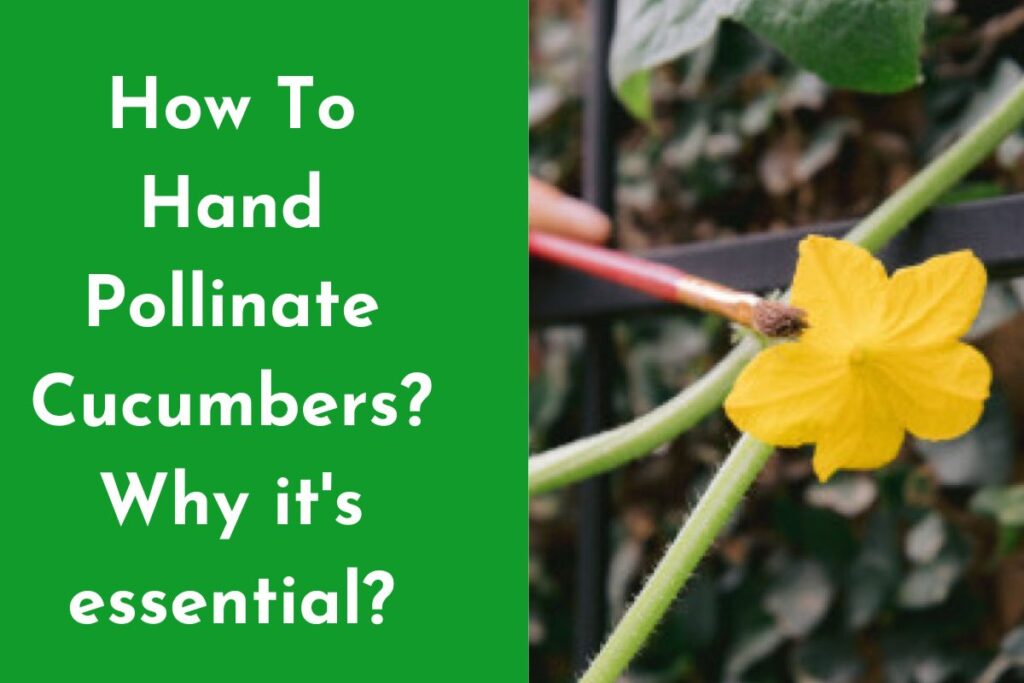
Hand pollination is a way to get pollen from male flowers to female flowers on cucumbers. This is done by moving pollen from male flowers to female flowers by hand. This method is used when there is a shortage of pollinators or when environmental factors are limiting natural pollination.
Here is a step-by-step guide on how to hand pollinate cucumbers:
- Identify male and female flowers: Cucumber plants have separate male and female flowers. Male flowers have long thin stems with no swelling behind the flower, while female flowers have a small swelling behind the flower that later develops into the cucumber fruit.
- Collect pollen: To collect pollen from male flowers, gently remove the flower petals to expose the anthers that contain the pollen. Use a small brush or cotton swab to collect the pollen.
- Transfer pollen to female flowers: Once you have collected pollen, transfer it to the stigma of the female flower. The stigma is located in the center of the flower and has a sticky surface that will hold onto the pollen. Gently rub the brush or cotton swab over the stigma to transfer the pollen.
- Repeat the process: Repeat the process for each female flower you want to pollinate. You may need to collect pollen from multiple male flowers to have enough to pollinate all the female flowers.
- Observe the results: After pollination, monitor the plants and observe the fruit development. If pollination is successful, you should see the fruit developing and growing in size.
Hand pollination is essential for cucumber production when natural pollination is not sufficient. It helps ensure a higher yield of healthy, normally shaped cucumbers. Additionally, hand pollination can also help produce cucumbers that are of a more uniform size, shape, and quality, which can be beneficial for commercial growers.
Are Cucumber Plants Self Pollinating?
Cucumber plants are not self-pollinating, so they must rely on insects or human intervention to pollinate their flowers. Cucumbers produce both male and female flowers. The male flowers contain the pollen, while the female flowers receive it.
For pollination to occur, the pollen must travel from the male flower to the female flower, either by an insect or by hand. Self-pollinating cucumbers, however, don’t need any external assistance in order to reproduce – they can pollinate themselves with their own pollen. This type of cucumber is usually found in grocery stores, but it’s not as common in home gardens.
What Are The Different Types of Cucumber Pollination?
Cucumbers are pollinated in two different ways: cross-pollination and self-pollination.
Here is the explanation of each pollination type.
Cross Pollination in Cucumbers
Cross-pollination occurs when pollen from one cucumber plant is transferred to the stigma of another cucumber plant. When cucumber plants are close to one another and are subject to wind or insect activity, this type of pollination typically occurs.
Self Pollination in Cucumbers
Self-pollination is when pollen from the same cucumber plant is transferred to its own stigma. This type of pollination can occur when the male and female parts of a single cucumber flower are close enough together, to allow the pollen to move freely between them.
Self-pollination is the most common form of pollination for cucumbers, and it typically produces higher yields than cross-pollination.
Both types of pollination are important for cucumbers, as they help ensure they produce healthy fruits. If a cucumber plant isn’t pollinated, it won’t be able to produce fruit, which can have a significant impact on the yield of a cucumber crop. Therefore, it’s important to understand the differences between these two types of pollination and how they work to help cucumber plants produce healthy fruits.
What is The Best Time of Day for Cucumber Pollination?
Cucumbers are usually pollinated in the morning when the flowers first open. Pollen is most effectively transferred at this time as the flower petals are still fresh and moist, and there is minimal wind to disrupt the pollen transfer process.
During the day, wind and heat can reduce the effectiveness of cucumber pollination. Therefore, it’s best to get it done early. Pollination should ideally be done before the flowers have begun to close for the day, typically around mid-morning. In some situations, cucumbers may need to be pollinated more than once a day to get the best results.
Related Reading:
- Troubleshooting Carrot Growing Problems: Why Won’t My Carrots Develop?
- How to Grow Delicious Aubergines in Your Polytunnel?
- How To Grow Mini Pumpkins From Seeds?
Why is Cucumber Pollination Important?
Cucumber pollination is essential for a healthy crop. Without pollination, cucumbers will not produce fruit or may produce distorted or low-quality fruit. Pollination is the process of moving pollen from one flower to another.
This lets the flowers fertilize each other and make cucumbers that can grow. The wind and insects typically take care of this, but occasionally hand labor is required to ensure that the crop grows well.
Pollination is important for two main reasons.
- First of all, cucumber plants are cross-pollinated, which means that the pollen from one flower must land on the stigma of another flower for pollination to happen.
- Secondly, pollination ensures that the cucumbers have enough genetic diversity to remain healthy and disease resistant. This genetic diversity is important for the long-term health of plants because it keeps them from breeding too much and helps them adapt to their environment.
When cucumbers are properly pollinated, they can produce up to 30 fruits per plant, with an optimal yield of 3-5 cucumbers per plant. When hand-pollinating cucumbers, you can expect an even better yield of 4 to 7 cucumbers per plant.
In conclusion, cucumber pollination is essential for healthy, productive cucumber plants. Pollination allows for genetic diversity and increases yields by providing more viable fruits. Hand pollination is often suggested for large or commercial cucumber farms to make sure they have a healthy harvest with lots of cucumbers.
What Happens If Cucumbers Aren’t Pollinated?
Without adequate pollination, cucumbers won’t produce the fruit we enjoy. If a cucumber plant isn’t pollinated, the flowers will simply die off without producing any fruit. This is because cucumber plants rely on external pollinators such as bees and other insects to transfer the male pollen from one flower to the female flower. Without this transfer of pollen, the female flower will not be able to produce cucumbers.
Also, if pollination doesn’t work right, the cucumbers that do grow might not be fully grown and have fewer seeds than usual. Inadequate pollination may also result in seedless cucumbers. Since cucumbers are usually grown for their seeds and pulp, underdeveloped or seedless cucumbers can be a major issue for growers.
It is therefore important to understand the cucumber pollination process and how to facilitate successful pollination if you want your cucumber plants to produce optimal fruit. Proper pollination is essential for cucumber growth and development, and without it, your harvest may suffer.

